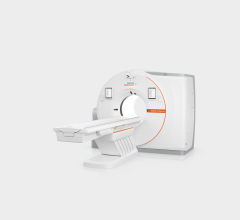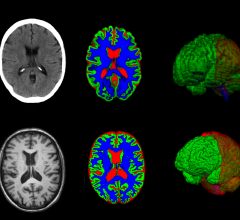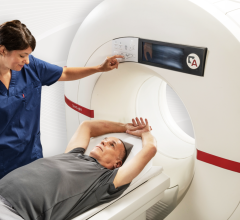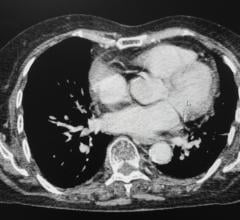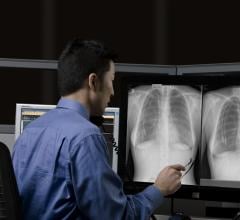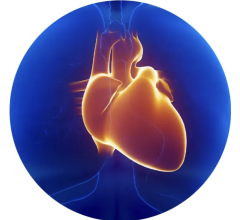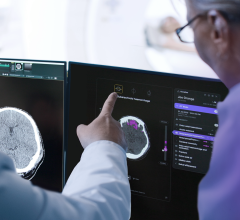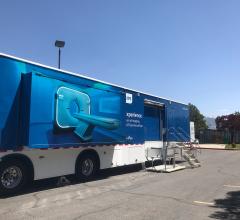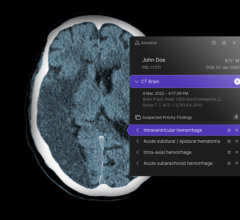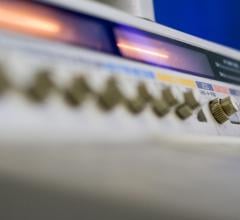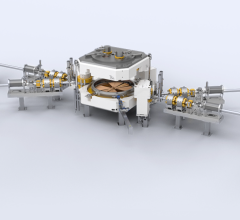Contributing Editor Greg Freiherr offers an overview of computed tomography (CT) advances at the Radiological Society of North America (RSNA) 2015. The video includes Freiherr during his booth tours with some of the key vendors who were featuring new technology.
Technology Report:
Computed Tomography (CT)
Related Content
News | Information Technology
November 21, 2023 — GE HealthCare has received U.S. FDA 510(k) Clearance for the new version of Digital Expert Access…
News | Coronavirus (COVID-19)
November 20, 2023 — Using an image-guided minimally invasive procedure, researchers may be able to restore the sense of…
News | Computed Tomography (CT)
November 17, 2023 — With the SOMATOM Pro.Pulse1, Siemens Healthineers presents a new Dual Source computed tomography (…
Sponsored Content
Sponsored Content
Videos | Radiology Business
Radiology departments have many different needs and face a wide variety of challenges that can impact their departments ...
News | Artificial Intelligence
November 15, 2023 — The 2023 Radiological Society of North America (RSNA) Alexander R. Margulis Award for Scientific…
Feature | Computed Tomography (CT) | By Melinda Taschetta-Millane
The world’s first computed tomography (CT) scan was performed in 1971 on a patient at Atkinson Morley Hospital in…
News | Artificial Intelligence
November 1, 2023 — Annalise.ai, a global leader in the radiology imaging sector, announced the launch of Annalise…
Sponsored Content
Feature | Breast Imaging
Despite decades of progress in breast imaging, one challenge continues to test even the most skilled radiologists ...
News | Computed Tomography (CT)
October 30, 2023 — According to the American Journal of Roentgenology (AJR), the conventional skeletal muscle area (SMA…
News | Computed Tomography (CT)
October 20, 2023 — In certain cases, a new method can provide as much information from brain images taken with computed…
News | Computed Tomography (CT)
October 17, 2023 — Thymus, a small and relatively unknown organ, may play a bigger role in the immune system of adults…
Sponsored Content
Sponsored Content
Videos | Radiology Business
Bayer Radiology’s Barbara Ruhland and Thom Kinst discuss how radiology departments can address the many different ...
News | Computed Tomography (CT)
October 13, 2023 — Arineta Cardiac Imaging is excited to announce the FDA 510(k) clearance of the SpotLight and …
News | Radiology Business
October 10, 2023 — Realizing a vision to deliver the best care to patients close to where they live in northern Ohio,…
News | Computed Tomography (CT)
October 3, 2023 — Using previously taken diagnostic computed tomography (CT) scans in place of CT simulation scans to…
Sponsored Content
Case Study | PACS
eHealth Saskatchewan plays a vital role in providing IT services to patients, health care providers, and partners such ...
News | Computed Tomography (CT)
September 29, 2023 —Nano-X Imaging, an innovative medical imaging technology company, today announced that HealthCCSng…
News | Artificial Intelligence
September 20, 2023 — Medical imaging artificial intelligence (AI) company Annalise.ai has announced that the results…
Sponsored Content | Case Study | Radiology Imaging | By Tim Hodson
In June, the Philips Radiology Experience Tour hit the road to provide healthcare professionals with an opportunity to…
News | Computed Tomography (CT)
September 19, 2023 — An advanced CT test can identify individuals with stable angina at a reduced risk of three-year…
News | FDA
September 13, 2023 — Annalise.ai, a leader in AI-powered medical imaging solutions, announced the receipt of 510(k)…
September 8, 2023 — A simple, noninvasive contrast enhanced ultrasound (CEUS) scan is an ideal tool for resolving…
Feature | PET Imaging
According to a new report from Transparency Market Research (TMR), PET radiotracers are expected to rise at a CAGR of 8…
News | Radiology Imaging
August 24, 2023 — Medical imaging via X-rays, CT scans, MRIs and ultrasounds provide health-care professionals with…
© Copyright Wainscot Media. All Rights Reserved.
Subscribe Now

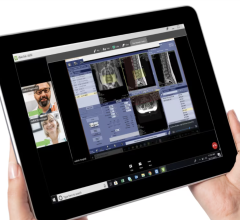
 November 21, 2023
November 21, 2023 

